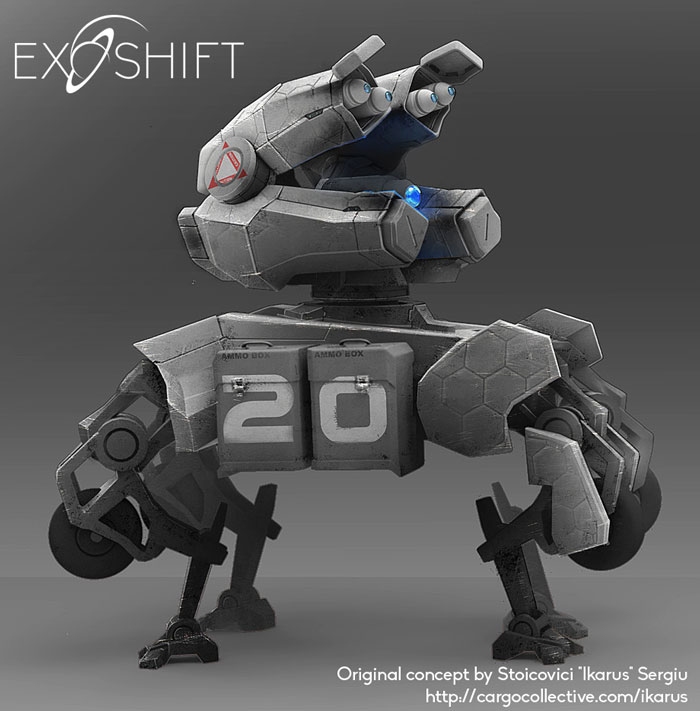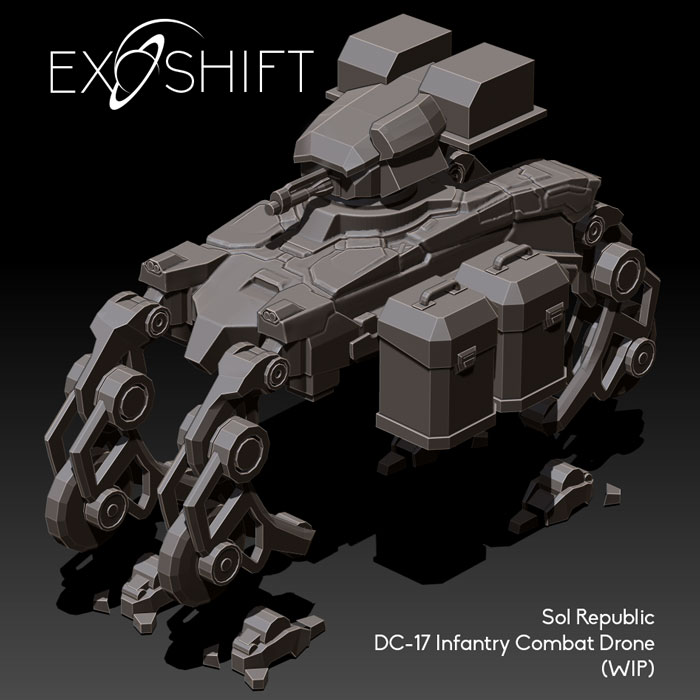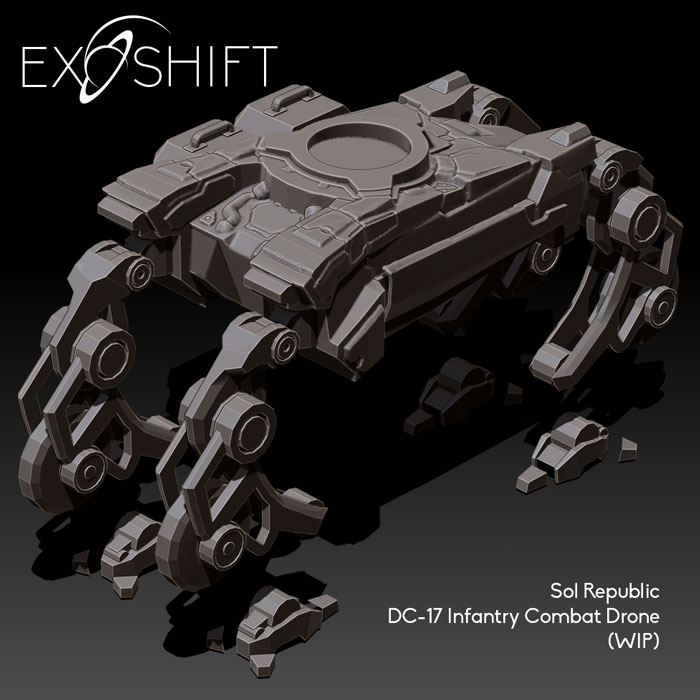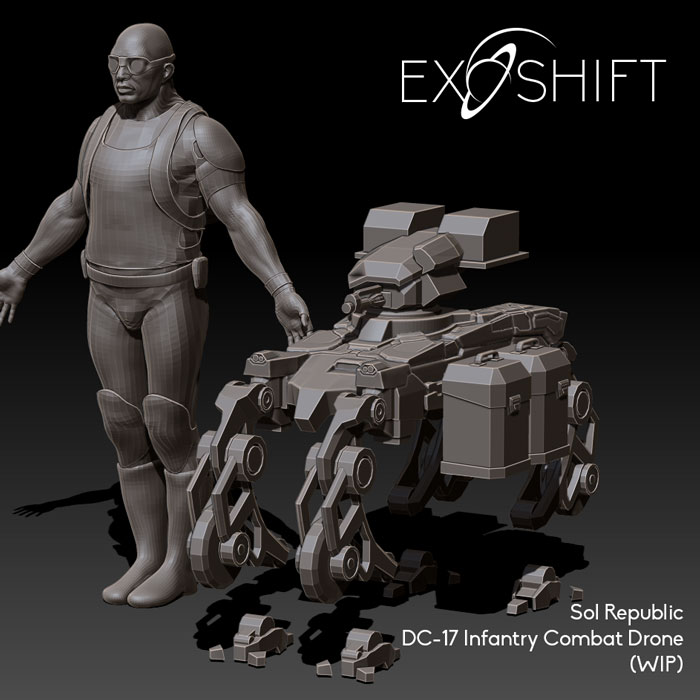DC-17 Modular Quad Legged Combat Drone
Current Progress:

---------------------
ORIGINAL POST:
I've been working on this combat drone model for a while, it's a quadruped and wheeled combat drone meant to assist ground troops. The setting is far future, but a practical far future where even though crazy technologies exist, they are often costly and energy inefficient.It started with this concept:

Then modeled as a simple 3DS MAX poly model, here:

I had front, side, and top viewsof the concept but it wasn't that detailed to begin with, so I took it into zbrush, used dynamesh to add panels and detail to the main hull of the drone, resulting in the 3 images below.



I plan to do the same thing to the turrets and legs once I finish reworking the original concept for those parts.
I've hit a point where I'm worried about the workflow I have planned for it and how to best model it.
I am now in the process of doing a retopo of the hull to clean up the sculpt, which I will then bring back into zbrush again for more detailing and decoration, such as joints, bolts, screws, plugs, straps, etc.
Right now, I've broken up the model into separate meshes along the most obvious panel lines, and I plan to go deep into complicated sub-d modeling. I'm not sure what to do with the panel lines, and how to go about joining back those separate meshes.
One problem I see right away is that a lot of the panels flow from one to the other across objects. Is there a good way to quickly line up the polygons across panels and objects? Make Planar works, but it lacks extra controls like snapping polys to the plane of another poly from the same or different object. I'd be willing to buy plug ins to handle this sort of thing.
Or, would it be better for me to dive deep into zbrush hard surface sculpting and try to get a clean result there?
Case in point, I'm having serious trouble integrating the offset vision port on the front of the hull.
Replies
The problem with that concept is that it is literally the big dog prototype with extra stuff bolted on. Not too creative, and the setting this is part of had a higher tech level and different aesthetic. Stuff like older hydraulic actuators are mostly replaced by high efficiency electric motors.
This is why the cylinders at the joints are so large, but I'll need to add more details to make them look advanced enough and with enough leverage to move the drone.
Also discovered the graphite loop tools, specifically straighten, which should allow me to work faster and then straighten out any odd edges.
I'm trying out some side details, but will likely remove them in favor of cleaner panels. Most of the time there will be stowage or ammo boxes on the side to break things up anyway.
I feel like I'm noodling around, slowing my progress a lot. So, this week I'm going to try and finish a smaller and simpler fantasy weapon where the concept is already finished and well defined.
I'm at the level of details that I want in the final model, minus the texture and normal map detail. I'm starting to finalize the model by chamfering edges and readying meshes for turbosmooth.
Still haven't figured out how to handle all these individual meshes though. This is going to be the high poly that goes into zbrush for final detailing, so should I be adding support loops for turbosmooth, or do that in zbrush creasing?
When it gets to the point where I start baking down to a lowpoly, should I start attaching everything into one mesh, and fill in the panel lines with polygons? Or, do I keep these separate and fill in any gaps with a separate filler mesh?
Decided on a shape for the legs. Now I just need to modify the design to better fit and allow for more movement.
Funny thing is, I plan to go back and reuse the original design as a variant model.